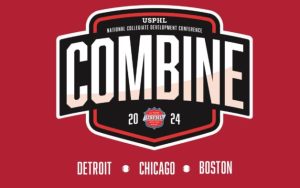Concussion education continues as top priority for CAHA

Concussions continue to be one of the most important issues facing the California Amateur Hockey Association (CAHA).
While concussion protocol has been in place within CAHA since 2012, the organization continues to grow and refine its strategy on dealing with concussions in the hopes of mitigating the effects of head injuries among minor hockey players.
CAHA board member Chris Hathaway said it’s important to constantly monitor concussion awareness in the whole of CAHA by training and educating players, parents, and coaches so that all parties are on the same page.
“Our training within CAHA is a lot more stringent than what USA Hockey mandates,” said Hathaway. “We frequently lead the country in education and awareness, but when it comes to concussions, coaches aren’t doctors. We take all the measures we can to ensure kids are assessed properly, but it’s still up to all of us – coaches and parents – to make sure kids are monitored for symptoms both at the rink and away from it as well.”
Part of what makes concussions so difficult to diagnose is that symptoms vary from person to person. While some may exhibit symptoms immediately, for others it can take up to 48 hours for players or parents to realize that something might be wrong.
“I’ve seen it happen so many times where a kid is fine eight or nine hours after the game, and then I find out 24 or 48 hours later that they started vomiting and were completely out of it,” said Hathaway. “That’s the scariest part for me, the fact it can take until that long after the incident for symptoms to show up. I think that part of it gets overlooked a lot.
“Ultimately, nobody knows these kids better than their parents. Because concussion symptoms don’t always show right away, it’s important that parents are paying attention to how their kids are responding away from the rink.”
With such an increased focus on awareness, prevention, and treatment of concussions, there are indications that both coaches and players are becoming more adept at recognizing the signs and symptoms of head injuries. CAHA president Tom Hancock referenced a recent story involving a team that a CAHA board member’s son plays on that illustrates the way players view concussions is evolving.
“This kid had gotten his bell rung and they took a look at him on the bench and he was responding appropriately and wasn’t showing any signs of a concussion,” said Hancock. “But the coaching staff sat him out just to be safe. The player was mad, but what makes it a neat story is that his teammates went to him and told him that he could really risk further injury if he went back on the ice.
“That just goes to show that the message is starting to trickle down and some of these kids are understanding the implications of concussions and how they can be dangerous even when you aren’t sure if it’s a concussion or not.”
Meanwhile, CAHA continues to refine a system of baseline testing for players over 12 years of age so that in the event of a head injury, there is at least some data that can serve as a barometer for how bad the injury is, or how quickly the player is recovering. This is a novel concept for parents and coaches who grew up in an era of going back onto the ice after ‘getting your bell rung,’ but Hathaway is adamant that this kind of testing will play a pivotal role in CAHA’s concussion strategy going forward.
“I’ve played hockey and rugby my whole life, long before there was any sort of concussion awareness or protocols at all,” said Hathaway. “Can you imagine how many concussions I’ve had? There wasn’t anything like baseline testing back then. It has really caught on here to get all kids over 12 baseline tested at the beginning of the season. If something happens during the season and they suffer any sort of head trauma, they won’t be cleared to return until they return to the levels they were at prior to the injury.
“This testing has saved – and will continue to save – a lot of kids from re-injuring themselves, or worse.”
— John B. Spigott









